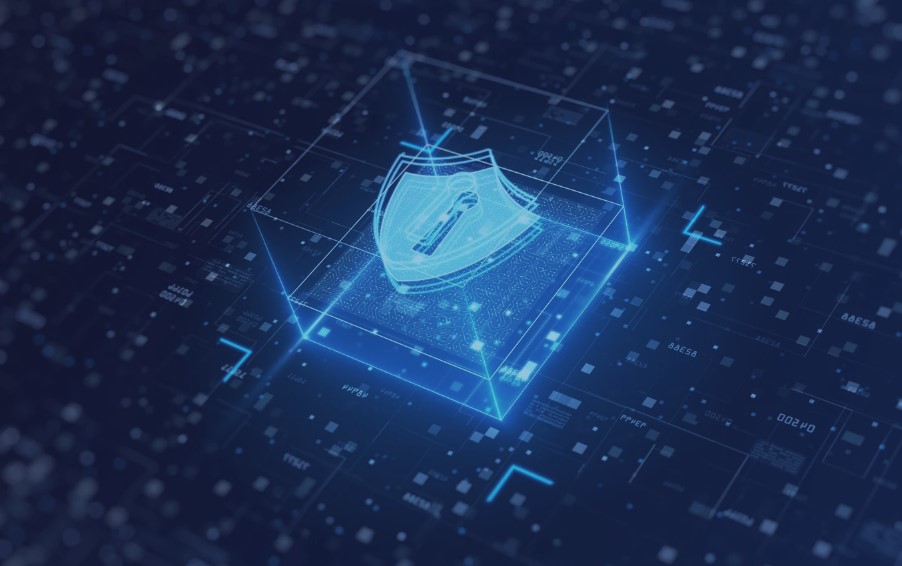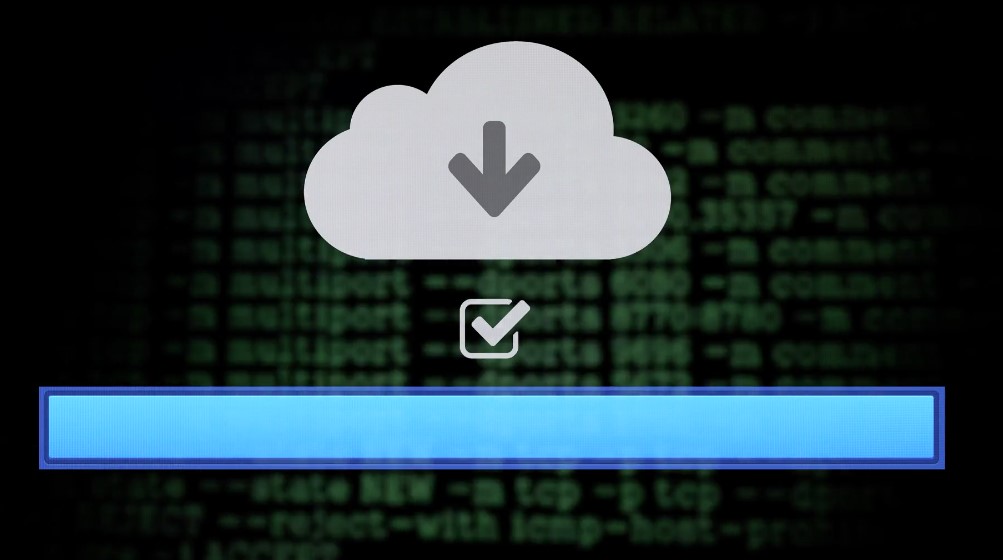High Resiliency Disaster Recovery (HRDR) is an approach designed to protect IT systems from disruptions while ensuring quick recovery with minimal impact. HRDR focuses on building infrastructures that can handle unexpected failures, such as cyberattacks, hardware breakdowns, and natural disasters, without significant downtime.
It integrates automated recovery processes, redundancy, and cloud-based solutions, allowing businesses to restore operations efficiently. By prioritizing robust systems and real-time data backup, HRDR is crucial for maintaining continuity and protecting critical assets in a world where reliability is non-negotiable.
High Resiliency Disaster Recovery Overview
| Purpose | Ensures quick recovery and minimal disruption during failures. |
| Core Components | Redundancy, automated failover, cloud integration. |
| Key Technologies | DRaaS, cloud platforms, real-time backups. |
| Benefits | Minimizes downtime, protects data, enhances business continuity. |
| Common Challenges | Complexity, high costs, and integration issues. |
High Resiliency Disaster Recovery (HRDR) is an approach centered around creating IT systems that can quickly bounce back from unexpected failures while ensuring minimal impact on business operations. It involves building robust infrastructures that incorporate redundancy and failover strategies, enabling automated recovery processes. For instance, mirrored databases and secondary backup systems ensure that operations continue seamlessly when primary systems encounter issues.
HRDR often relies on Disaster Recovery as a Service (DRaaS) and cloud integration, offering scalability and flexibility that traditional on-premise systems lack. By using cloud platforms, businesses can recover data and systems quickly, reducing potential losses during a disaster. The approach also includes continuous data backups, ensuring that critical information is always up-to-date and available for recovery.
Implementing HRDR can be challenging due to the complexity of integrating diverse systems, managing costs, and ensuring compliance with regulations.
Core HRDR Strategies

| Redundancy | Implement backup systems to ensure continuity during primary failures. |
| Automated Failover | Enable systems to automatically switch to backups when disruptions occur. |
| RTO and RPO Optimization | Set strict recovery objectives to minimize downtime and data loss. |
| Cloud Integration | Leverage cloud resources for scalable and flexible disaster recovery. |
| Risk Assessment | Regularly analyze and address potential threats to IT systems. |
Redundancy
Redundancy is a foundational element in High Resiliency Disaster Recovery. It involves setting up backup systems that are ready to take over whenever the primary systems fail. This can include mirrored databases, redundant servers, and backup network paths. By having these systems in place, businesses can ensure continuous operations even when critical components encounter issues.
Automated Failover
Automated failover mechanisms ensure that, in the event of a system failure, operations switch over to backup resources without manual intervention. This reduces downtime by enabling immediate responses to disruptions. Automated failover is a critical strategy, especially for businesses that need constant uptime and cannot afford delays in recovery.
RTO and RPO Optimization
Recovery Time Objectives (RTOs) and Recovery Point Objectives (RPOs) are metrics that define the maximum allowable downtime and data loss during recovery. By optimizing these objectives, businesses can minimize the impact of disruptions, ensuring that critical data is restored quickly and operations resume with minimal interruption.
Cloud Integration
Integrating cloud solutions into HRDR strategies allows businesses to scale their recovery resources as needed. Cloud-based Disaster Recovery as a Service (DRaaS) offers flexibility, cost-efficiency, and rapid deployment, making it easier to recover data and applications during unexpected events.
Risk Assessment
Regular risk assessments are essential to identify and mitigate potential threats. By continuously evaluating the IT environment, organizations can adapt their HRDR strategies to emerging risks, ensuring preparedness for a wide range of disaster scenarios. Just as disaster recovery requires careful planning, opening a business bank account also demands preparation and understanding of necessary requirements.
Redundancy and Failover Mechanisms

| System Redundancy | Backup systems that activate when primary systems fail. |
| Data Replication | Continuous replication of critical data across multiple locations. |
| Automatic Failover | Immediate switch to backup systems during disruptions. |
| Load Balancing | Distributes workload evenly across multiple systems to prevent overload. |
| High Availability Setup | Ensures that critical systems remain operational with no single point of failure. |
System Redundancy
Redundancy is the backbone of any high-resiliency strategy. It involves creating backup systems that mirror the primary infrastructure. For example, having multiple data centers with identical configurations ensures that if one fails, another takes over instantly. This prevents operational disruptions and helps maintain continuity.
Data Replication
Data replication is critical to redundancy. This process continuously copies and synchronizes data across multiple systems or locations. In the event of a disaster, replicated data ensures minimal loss and allows quick restoration of essential information. Advanced replication techniques, like real-time mirroring, are essential for high-resiliency disaster recovery.
Automatic Failover
Automatic failover mechanisms are vital for seamless recovery. When a system detects a failure, it immediately transfers operations to backup resources without manual intervention. This automatic switch minimizes downtime and ensures that critical processes continue uninterrupted.
Load Balancing
Load balancing is essential in distributing workloads evenly across servers and systems. This prevents overloads on any single component, reducing the risk of failures. By balancing the demand, the system remains stable and responsive even under high traffic or resource-intensive operations.
High Availability Setup
A high availability setup involves designing systems with no single point of failure. Redundant components, including power supplies, network connections, and storage, ensure that even if one component fails, others keep the system running smoothly. This strategy is crucial in environments where continuous uptime is non-negotiable.
DRaaS and Cloud Integration

| Cloud-Based Recovery | Uses cloud platforms for scalable disaster recovery. |
| DRaaS Benefits | Cost-effective, scalable, and faster recovery compared to traditional methods. |
| Multi-Region Replication | Replicates data across different geographical regions for added redundancy. |
| Automated Recovery | Enables fast, automated restoration of systems and data in case of disaster. |
| Hybrid Cloud Solutions | Combines on-premises and cloud resources for flexible disaster recovery. |
Cloud-Based Recovery
Cloud integration is a fundamental part of modern High Resiliency Disaster Recovery strategies. By leveraging cloud platforms, businesses can store and recover critical data without needing significant on-premises infrastructure. Cloud-based recovery ensures that even if a local system fails, data and applications can be quickly restored from the cloud.
DRaaS Benefits
Disaster Recovery as a Service (DRaaS) provides a scalable and cost-efficient alternative to traditional recovery methods. DRaaS leverages the cloud’s flexibility, allowing businesses to pay for resources based on usage.
Multi-Region Replication
One of the key strengths of cloud integration is multi-region replication. Businesses can store copies of their data across different geographic regions, ensuring that even if one region is compromised, data remains accessible from another.
Automated Recovery
Cloud-based disaster recovery solutions often come with automated recovery processes. This means that in the event of a failure, systems and data can be restored automatically without manual intervention. Automation significantly reduces recovery time and ensures that operations can resume quickly, minimizing the impact of any disaster.
Hybrid Cloud Solutions
Many organizations opt for a hybrid approach, combining on-premises systems with cloud resources. Hybrid cloud solutions offer the flexibility to scale resources as needed, integrating the reliability of local data centers with the scalability and resilience of cloud platforms.
Risk Assessment and Mitigation

| Identifying Critical Risks | Regularly evaluate potential threats to IT systems and business operations. |
| Business Impact Analysis | Analyze the consequences of various disaster scenarios on operations. |
| Risk Prioritization | Rank risks based on likelihood and potential impact to focus on key vulnerabilities. |
| Preventative Measures | Implement controls and safeguards to reduce identified risks. |
| Regular Testing | Continuously test and update recovery plans to address evolving threats. |
Identifying Critical Risks
Risk assessment begins with identifying the potential threats that could disrupt operations. These can range from cyberattacks, natural disasters, and hardware failures to human errors. By regularly evaluating these risks, businesses can gain insights into where their vulnerabilities lie and prepare for various scenarios.
Business Impact Analysis
A business impact analysis (BIA) assesses the potential consequences of different disaster scenarios on business operations. This analysis helps identify which systems and processes are most critical to the business and need priority in a recovery plan. By understanding the potential financial and operational impact, companies can allocate resources effectively.
Risk Prioritization
After identifying risks, it’s essential to prioritize them based on their likelihood and impact. Not all risks require the same level of attention. By ranking risks, businesses can focus on addressing the most critical vulnerabilities first, ensuring that limited resources are used effectively.
Preventative Measures
Preventative measures involve implementing controls and safeguards to mitigate identified risks. This can include strengthening security protocols, upgrading infrastructure, and training employees to avoid common errors. The goal is to minimize the chances of a disaster occurring and reduce its potential impact if it does.
Regular Testing
Risk assessments and recovery plans are only effective if they are regularly tested and updated. Continuous testing through simulations, drills, and mock scenarios allows businesses to refine their strategies and address any gaps. Regular updates ensure that the recovery plan evolves with changing technologies, business operations, and emerging threats.
Key HRDR Benefits
| Minimized Downtime | Ensures quick recovery to reduce operational interruptions. |
| Enhanced Data Protection | Safeguards critical information through real-time backups and replication. |
| Improved Business Continuity | Maintains essential operations during disruptions. |
| Cost Efficiency | Leverages cloud solutions to reduce hardware and maintenance costs. |
| Scalability and Flexibility | Adapts recovery plans to business needs, scaling resources as required. |
Minimized Downtime
High Resiliency Disaster Recovery (HRDR) is built to reduce the time it takes to get systems back online after a disaster. By implementing automated failover mechanisms and redundant systems, organizations can ensure that any interruptions are brief, keeping operations running smoothly even during unexpected disruptions.
Enhanced Data Protection
One of the core benefits of HRDR is its strong focus on data protection. Through real-time replication and consistent backups, critical data is preserved, even in the face of major system failures. This significantly reduces the risk of data loss, which is vital for maintaining trust and compliance with regulatory requirements.
Improved Business Continuity
HRDR ensures that essential business functions continue during and after a disaster. With a robust recovery strategy, businesses can keep delivering services and products without significant delays, maintaining both revenue streams and customer satisfaction.
Cost Efficiency
Traditional disaster recovery solutions often require significant investment in physical infrastructure. HRDR, especially when integrated with cloud services like Disaster Recovery as a Service (DRaaS), cuts these costs by utilizing scalable, pay-as-you-go models. This reduces upfront expenses while still offering top-tier recovery capabilities.
Scalability and Flexibility
HRDR offers the flexibility to scale resources up or down based on business needs. Whether a business is growing or experiencing seasonal demand fluctuations, HRDR can adjust recovery plans accordingly, ensuring that operations remain resilient without unnecessary expenditure.
Challenges in Implementing HRDR

| Key Challenges | Details |
|---|---|
| High Costs | Significant investment required for infrastructure and solutions. |
| Complexity of Integration | Difficulties in integrating legacy systems with modern recovery solutions. |
| Compliance and Regulations | Adapting to evolving data protection and security requirements. |
| Skill and Resource Gaps | Need for specialized expertise and constant monitoring. |
| Constant Updates | Regular testing and updates needed to keep plans effective. |
High Costs
Implementing High Resiliency Disaster Recovery requires significant investment, especially for businesses that need to maintain extensive redundancy and failover systems. The costs associated with setting up and maintaining backup data centers, cloud resources, and automated failover mechanisms can be substantial, making it a challenge for many organizations.
Complexity of Integration
Integrating HRDR into existing IT infrastructure can be a complex task, particularly when dealing with legacy systems that may not be fully compatible with modern recovery solutions. Ensuring seamless operation across diverse environments, including on-premises and cloud systems, requires careful planning and sophisticated tools.
Compliance and Regulations
Businesses must comply with a range of data protection regulations, which can vary across regions and industries. Keeping up with evolving standards like GDPR, CCPA, and industry-specific requirements adds another layer of complexity to HRDR strategies. Ensuring that all aspects of disaster recovery meet legal requirements can be a daunting and ongoing task.
Skill and Resource Gaps
HRDR requires specialized knowledge and skills, from setting up automated failover systems to conducting regular risk assessments. Many organizations struggle with finding and retaining staff with the necessary expertise to manage and monitor these systems continuously, leading to gaps in their disaster recovery capabilities.
Constant Updates
An effective HRDR plan is not static—it needs to be regularly tested, updated, and refined to account for new threats and changes in the IT environment. This requires a commitment to ongoing testing, which can be resource-intensive but is critical to ensuring that recovery plans remain reliable in the face of new challenges.
FAQs
Conclusion
High Resiliency Disaster Recovery (HRDR) is essential for maintaining business continuity and protecting critical IT systems against various disruptions. By focusing on redundancy, automated failover, and cloud integration, HRDR ensures quick recovery and minimal downtime.
While implementing HRDR can be complex and costly, the benefits of reduced data loss and enhanced operational resilience make it a crucial investment for any organization.

